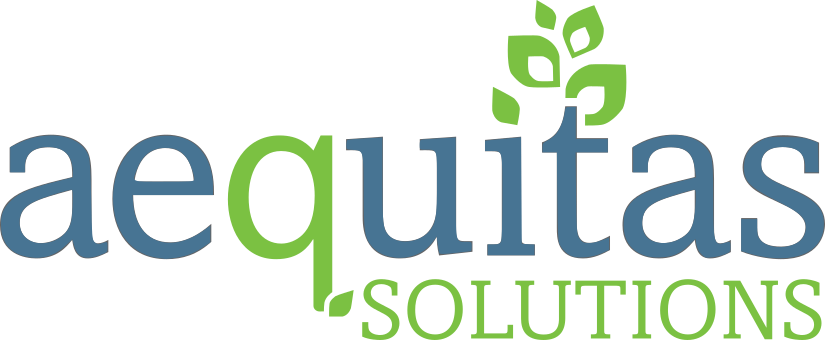Multi-tiered system of supports, also referred to as MTSS, are a framework for educators to address the needs of their students. Educators are increasingly implementing MTSS to improve outcomes with personalized support and interventions for every student. MTSS improves visibility into student progress and outcomes, which helps educators make data-driven decisions that support academic, behavioral, and social-emotional well-being.
The efficacy and growing understanding of MTSS’s benefits are prompting more schools to adopt this system, but many are unsure where to begin. While implementing MTSS is rewarding, it requires a well-thought-out and comprehensive plan for successful results.
First, it’s important to understand your district’s specific objectives and resources. This process can include setting clear goals, choosing the right assessment tools, and creating a team to track progress and adjust interventions. By following these steps, schools can build a strong MTSS framework that helps all students succeed.
What is MTSS? A Foundation for Success
MTSS is a data-driven, tiered framework to support the whole child by meeting their academic, behavioral, and social-emotional needs. It can incorporate elements from positive behavioral interventions and support (PBIS), and response to intervention (RTI). The frameworks have three tiers that increase the support and interventions given based on student needs.
- Tier 1: Universal Support – All students receive high-quality core instruction and support in this tier. Teachers implement research-based practices and regular screening to identify potential challenges early. This foundational level typically meets the needs of about 80% of students.
- Tier 2: Targeted Intervention – When universal support isn’t sufficient, students receive additional help through small group interventions. These targeted supports address specific skill gaps while maintaining core instruction. This level meets the needs of approximately 15% of students.
- Tier 3: Intensive Support – Students requiring more intensive support receive individualized interventions. This level of support might include one-on-one instruction, specialized programs, or comprehensive evaluation for special education services. About 5% of students need this level of support.
A core component of MTSS is monitoring student progress. Regularly reviewing student progress gives educators a proactive way to quickly change intervention plans if the support isn’t working as intended.
The ultimate goal of implementing MTSS is to provide proactive and equitable support for every student. Following the framework helps educators address student needs before they become larger problems.
Tips for Effective MTSS Implementation
Implementing MTSS requires careful planning and execution. Let’s examine best practices for establishing and maintaining an effective MTSS framework.
Build a Collaborative Team
The first step to implementing MTSS is to assemble a team of key stakeholders. This team should include administrators, teachers, counselors, and support staff—personnel from different areas of the school system who directly interact with students.
Each team member should have clearly defined roles and be prepared to work together toward shared goals. Effective collaboration ensures that the team can respond to the needs of students efficiently, from academic support to behavioral interventions.
Conduct a Needs Assessment
A key part of implementing MTSS is identifying gaps in the current student success planning system by gathering data on student performance and existing resources. The team formed in step one should review data points like academic achievement, behavioral records, attendance patterns, and social-emotional assessments. This step also includes assessing available resources, including support programs, tools, and staff expertise.
Once your team has gathered the data, they can identify specific gaps that MTSS aims to fill. They should document areas where the current system is lacking and areas that are working but could be improved upon in a new system. At the end of this process, the district should understand its needs to set the foundation for a successful MTSS implementation.
Define Clear Tiered Strategies
Simply having an MTSS framework doesn’t necessarily result in an effective system. Your district should define what constitutes “progress,” “intervention success,” and “student growth” to give educators and students clear expectations. These definitions help outline expectations, including:
- How and when to conduct universal screening
- Desired student outcomes
- What data points indicate the need for tier movement
- When to adjust interventions based on student response
Your district should establish regular progress monitoring schedules to track intervention effectiveness, with measures defining sufficient progress at each level.
Establishing these criteria from the start keeps everyone aligned and simplifies the process of tracking which interventions are effective. The system operates more efficiently and makes progress easier to monitor when students are correctly placed in tiers based on their needs.
Implement Data Collection Systems
Effective data collection and analysis are the foundation for MTSS success and require careful planning and execution. Schools must select assessment tools that provide meaningful insights while establishing regular screening schedules that catch potential issues early. Student progress monitoring should occur consistently across all tiers, with data regularly reviewed and analyzed to inform instructional decisions and intervention adjustments.
Create Professional Development Plans
A successful MTSS framework depends on a well-trained staff understanding of its principles and practices. To achieve this, districts should provide educators and support staff with professional development opportunities.
Start by ensuring all staff members understand MTSS, including its tiered intervention structure and how it supports student success. Training should also cover practical skills, such as analyzing student data, identifying appropriate interventions, and tracking progress effectively.
Regular workshops, coaching sessions, and collaborative meetings can reinforce these skills over time. This ongoing support helps educators feel confident and capable when implementing MTSS strategies, ensuring consistency and effectiveness across the district.
Common Challenges in an MTSS Implementation
Changing your district intervention system to MTSS often involves resistance to change, resource limitations, and difficulty analyzing and managing data.
Challenge 1: Resistance to Change
Helping staff embrace the new MTSS framework requires a thoughtful approach to change management. Start by clearly communicating the benefits of MTSS for both students and teachers and provide concrete examples of success from similar schools if available. Offer adequate support throughout the implementation process, including mentoring and coaching opportunities. Take time to celebrate early successes, no matter how small, and address staff concerns quickly to maintain momentum.
Challenge 2: Limited Resources
Schools often grapple with limited time, staff, and funding when implementing MTSS. Address these constraints by prioritizing the most critical components impacting student success. Make the most of existing resources by training staff effectively and creating efficient processes that minimize time sinks.
Challenge 3: Data Management Issues
Effective data handling requires streamlined systems and clear protocols that make information accessible and actionable. Implement integrated systems that allow for easy data entry and analysis, reducing staff’s time spent on administrative tasks. Establish regular review cycles to ensure data quality and relevance and utilize automated tracking whenever possible to improve efficiency and accuracy.
Districts should also use an integrated Student Information System to simplify the process. An SIS keeps all student data in one place, which makes it easier for staff to access and use. It also helps track interventions and reporting so administrators can focus more on supporting students and less on administrative tasks.
Making MTSS Work for Your School
Successfully implementing MTSS requires commitment, collaboration, and continuous improvement. When combined with strong tracking tools and clear processes, MTSS can improve student outcomes across academic, behavioral, and social-emotional levels.
Your Student Information System plays a crucial role in MTSS success. An effective system should provide real-time data tracking capabilities, comprehensive progress monitoring, and communication features for collaboration among staff members. These tools help schools evaluate the effectiveness of their MTSS framework and make data-driven decisions to support student success.
Our SIS suite provides a comprehensive solution for schools implementing MTSS, offering comprehensive tracking, reporting, and communication tools. Contact us today to learn how our system can support your MTSS implementation journey.


